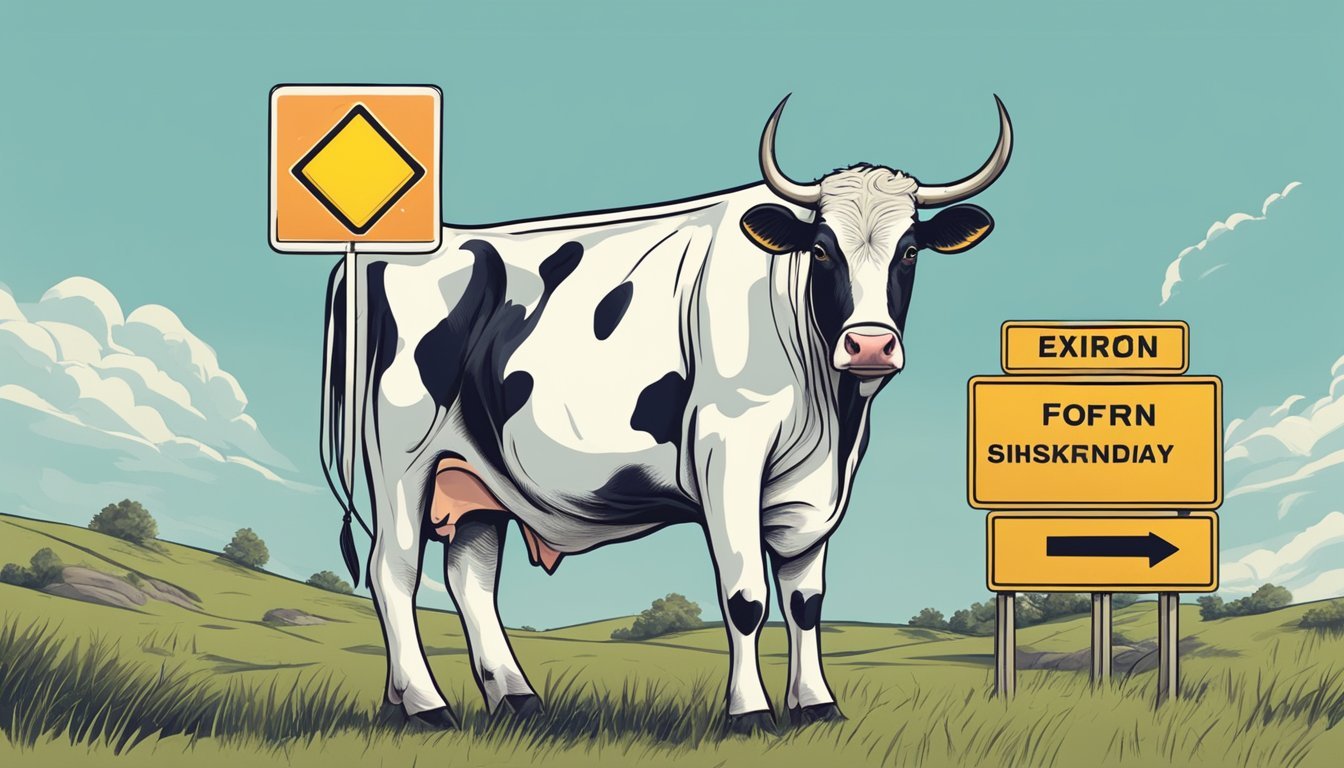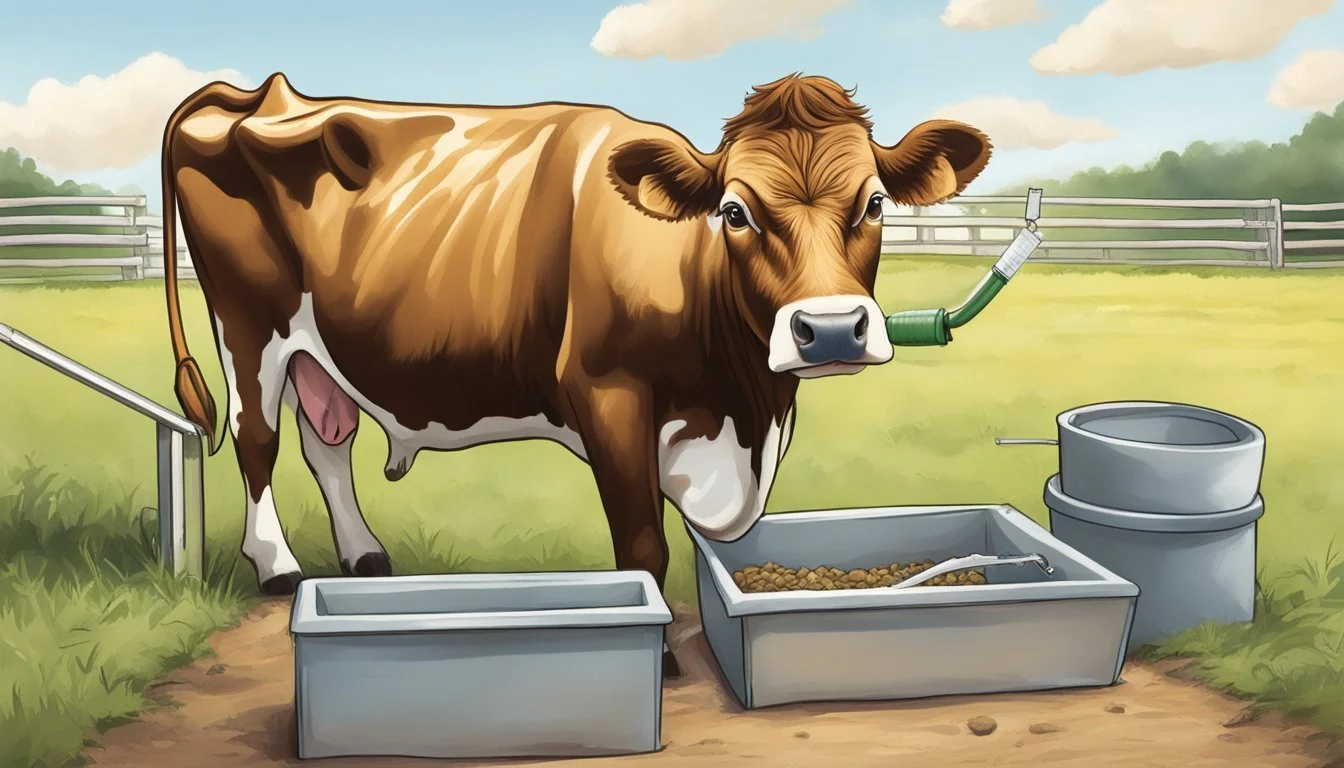The Health Risks of Growth Hormones in Meat
Understanding the Implications
Growth hormones have long been a controversial topic within the food production industry and their usage in animal agriculture is a subject of concern regarding human health. These growth promoters, such as estradiol-17β, progesterone, testosterone, and synthetic alternatives like zeranol, trenbolone, and melengestrol acetate, are administered to livestock to enhance growth rates and improve feed efficiency, resulting in more profitable meat production. While these substances have regulatory approvals in many regions, the potential risks associated with their residues in meat products continue to spark debate among health professionals, regulators, and consumers.
The impact of hormonal residues in meat on human health has been extensively studied, with various scientific bodies evaluating the safety and implications of their dietary consumption. Among the concerns are the possible associations between hormone residues and an increased risk of various cancers, including breast and prostate cancers, as well as the potential for these substances to disrupt human hormonal balance. Despite measures to ensure that hormone levels in meat are within permissible limits, there is ongoing investigation into the long-term health effects of consuming such meat products, especially with respect to the cumulative exposure over time.
Health organizations and scientific committees have worked to establish acceptable daily intakes for these substances, but the complexity of hormonal action and individual susceptibility present challenges in assessing true risk levels. It remains crucial for ongoing research to monitor the safety of growth hormone use in meat production and its broader public health implications as consumer demand for hormone-free meat options rises and regulatory frameworks evolve.
Overview of Growth Hormones
Growth hormones, both natural and synthetic, are compounds used in the livestock industry to promote growth and improve feed efficiency, particularly in cattle be it beef cattle or dairy cows. These hormones can be administered to animals through injections, implants, or feed additives, and they mimic the actions of naturally occurring hormones within the livestock's body.
Natural Hormones: Livestock naturally produce hormones such as estrogen, testosterone, and progesterone, which are essential for growth and development.
Synthetic Hormones: Additionally, synthetic versions of these hormones, as well as other anabolic agents like trenbolone acetate and zeranol, are employed. For example, bovine somatotropin (bST) is a synthetic version of a naturally occurring hormone that stimulates milk production.
The use of growth promoters is regulated in many countries to ensure that their use is safe for both the animal and humans consuming their products. These regulations govern the specific types of hormones that can be used, dosages, and withdrawal periods before the animals are slaughtered.
Hormone Type Purpose Regulation Example Natural Growth, development Monitored levels Synthetic bST Increase milk production FDA Approved Anabolic Agents Improve muscle mass Controlled use
The safety of hormone use in meat production is subject to ongoing research and debate. When considering human health risks, it is critical to look at exposure levels, dose-response relationships, and any potential consequences of chronic consumption.
Regulations and Legal Aspects of Growth Hormones in Meat
Regulatory frameworks govern the use of growth hormone treated animals, reflecting concerns over food safety and public health. They vary significantly across international borders, shaped by ongoing scientific research and trade negotiations.
International Legislation
International legislation on growth hormones is guided by standards set by organizations such as the World Trade Organisation (WTO). The WTO's Agreement on the Application of Sanitary and Phytosanitary Measures (SPS) sets the groundwork for international food trade, aiming to ensure food safety and animal health.
European Union Legislations
The European Union has adopted stringent legislation on the use of hormones in meat production. Directive 96/22/EC of the European Council prohibits the use of certain growth hormones and requires strict regulation of veterinary drugs. The European Commission oversees the enforcement, ensuring compliance with the ban on hormones like estradiol, progesterone, testosterone, and others, across its member states.
United States
The United States Department of Agriculture (USDA) partners with the Food and Drug Administration (FDA) to regulate the use of hormones in livestock production. While the USDA prohibits the use of hormones in hogs, chickens, turkeys, and other fowl, the use in cattle and sheep is still permitted provided it meets FDA approval. These regulatory bodies enforce compliance through monitoring and testing of veterinary medicine and antibiotic residues.
Canada
Canada's approach to growth hormone use in meat production is more aligned with the United States than Europe. It permits the use of certain growth hormones under controlled conditions, overseen by health agencies that ensure the safety of veterinary drugs within the country's meat industry.
Health Risks of Hormones in Meat
The use of growth hormones within the meat industry has been linked to several health risks in humans who eat meat including cancer, endocrine disruption, and antibiotic resistance.
Cancer Risks
Research into the impact of the residues of hormones, such as estradiol-17β and other hormonal substances from meat consumption, shows a potential association with hormone-dependent cancers. The human body's endocrine system can be sensitive to external hormones, which may pose a risk of promoting hormone-sensitive tumors, including breast and prostate cancers.
Disruptioin of Naturally Occurring Hormones
The introduction of external hormones into the human body through meat consumption can potentially disrupt the natural hormonal balance. This disruption can affect various bodily functions including reproduction and metabolic processes. Risk assessments have noted that the impacts on the human body can be negligible when hormonal substances are used following good veterinary practices.
Antibiotic Resistance
Hormonal growth promoters in livestock can indirectly contribute to antibiotic resistance. When growth hormones are used improperly, they can lead to the increased use of antibiotics to treat animals, which in turn can promote the development of antibiotic-resistant bacteria that pose a risk to human health.
Other Potential Health Concerns
Beyond the explicit risks to cancer and the endocrine system, there are other potential health concerns regarding hormonal residues in meat including potential effects on child development and links to obesity. More assessments are needed to confirm these potential risks, emphasizing the importance of regulatory oversight and adherence to safe practices in the use of hormones in meat production.
Scientific Evidence and Risk Assessment
Scientific evidence plays a crucial role in understanding the health risks associated with growth hormones in food. Risk assessment is a structured process utilized to evaluate the potential hazards that these hormones may pose to human health after consumption. It encompasses hazard identification, hazard characterization, exposure assessment, and risk characterization.
The European Food Safety Authority (EFSA) is one of the key organizations that review scientific data on growth hormones used in food production. They assess risks based on new scientific evidence, ensuring that their evaluations are comprehensive and up-to-date.
Hazard Identification is the first step:
Sex hormones such as estradiol, progesterone, and testosterone are often scrutinized due to their natural occurrence and synthetic use in livestock such as dairy cows.
Synthetic hormones used for growth promotion in animals could potentially remain as residues in meat.
Exposure Assessment evaluates the degree of consumer exposure to these hormones:
It measures the levels of hormonal residues detected in chicken and cattle meat.
The frequency and quantity of meat consumed by adults and children are examined.
Hazard Characterization looks into the:
Nature of adverse health effects due to long-term exposure to harmful residues.
Specific health concerns include developmental, reproductive, and cancer risks.
Risk Characterization brings together the data:
It provides an estimate of the likelihood and severity of adverse health effects in exposed populations.
This rigorous scientific approach ensures that assessments are fact-based and devoid of assumptions, reflecting a clear understanding of the potential risks posed by growth hormone consumption.
Growth Hormones in Different Livestock
In livestock production, the use of growth hormones varies significantly between species, with some animals receiving these substances to promote faster growth and increased efficiency in meat production.
Beef Production
In the beef industry, hormones such as estradiol, progesterone, and testosterone—naturally occurring hormones—as well as synthetic options like trenbolone, zeranol, and melengestrol acetate (MGA) are utilized to enhance growth rates and improve feed efficiency neccesitating fewer resources.
These substances are implanted with an ear implant or injected into cattle during their lifecycle to increase meat yield.
Recombinant Bovine Growth Hormone in Dairy Cows
It isn't just beef production that causes human health concerns, growth promoting hormones can be used for the majority of food producing animals. Dairy cows for example are given recombinant bovine growth hormone, a man-made cocktail that promotes milk production by fattening the animal without the need to increase feed. Recombinant bovine growth hormone is thankfully strictly regulated to prevent estrogenic activity in those who consume dairy products.
Poultry and Chickens
For poultry and chickens, the use of hormonal growth promoters is generally prohibited. Instead, selective breeding, improved nutrition, and optimal farm management practices are key factors in achieving the desired growth rates. Growth hormones are not legally used in poultry production due to potential health risks and the effectiveness of non-hormonal alternatives.
Swine and Pork
The swine industry does not use hormonal growth promoters because of legal restrictions and concerns over human health impacts. Pork production has focused on genetics, nutrition, and management practices to reach optimal growth without relying on such substances.
Fish and Other Meats
Growth hormones are not standard practice in fish farming or in the rearing of other meats, including lamb and sheep. Concerns regarding ecological risks and endocrine-disrupting effects on aquatic life have limited their usage. Non-hormonal methods are central to the production of these meats, emphasizing environmental and consumer safety.
Environmental and Ethical Considerations
The use of growth hormones in livestock production raises various environmental and ethical issues. Environmentally, hormones such as estradiol, testosterone, and trenbolone may contaminate waterways, influence soil health, and potentially disrupt ecosystems. Residues from these substances can travel through agricultural runoff into surface and groundwater, posing a risk of endocrine disruption in aquatic species and affecting biodiversity.
Ethical concerns pertain to the treatment of cattle. Implants and beta-agonists used for growth promotion may lead to animal welfare challenges. Rapid development induced by hormones may cause health issues in cattle, including undue stress and discomfort of the treated animals.
Health Implications:
Presence of residual hormones in meat and other food products may contribute to public health concerns. These residues have a potential impact on human hormone balance and organ health.
Regulatory Aspects:
Farmers utilize growth hormones under strict regulations to ensure safety for human consumption. Nevertheless, illegal or unregulated hormone usage remains a concern for both ethical and safety reasons.
Ecosystem Disruption:
Water Pollution: Hormones entering water systems.
Soil: Potential alteration of soil microbial communities.
Internationally, the debate over hormone use in food production leads to different regulatory approaches, with some countries banning certain hormones outright. The conversation intertwines environmental safety, public health, and the ethical treatment of animals, compelling stakeholders to consider sustainable farming practices that balance productivity with these concerns.
Detection and Testing of Hormonal Residues
Testing for hormonal residues in bovine meat is a critical step to ensure food safety and compliance with regulatory standards. Laboratories employ various methods to detect the presence of hormonal residues.
Methods used for Testing:
Immunoassay Tests: They utilize antibodies to detect specific hormones. These tests are known for their sensitivity and specificity.
Chromatography: Mass spectrometry paired with liquid or gas chromatography is a more comprehensive approach, allowing for the analysis of multiple residues simultaneously.
Enzyme-Linked Immunosorbent Assay (ELISA): Frequently used due to its high-throughput capability and relatively low cost.
Regulatory Aspects:
Maximum Residue Limits (MRLs): Authorities set MRLs, which represent the highest level of a residue that is legally tolerated in food. MRLs for hormones in meat are established based on rigorous evaluations of the compound's safety.
Each testing method strives to accurately identify and quantify hormonal residues, taking into account the MRLs to assess whether the meat is safe for consumption. Regulatory agencies may conduct routine surveillance or target testing when residues are suspected. This process is integral to maintaining consumer confidence in meat products and protecting public health.
Consumer Choices and Alternatives
When exploring the available options to mitigate the health risks associated with meat chocl full of growth hormones, consumers can turn to organic meat options and plant-based alternatives. These choices are readily available in supermarkets and provide a range of benefits associated with their respective production processes.
Organic Meat Products
Organic meats come from animals that have been raised without the use of synthetic growth hormones and antibiotics. Supermarkets are increasingly offering organic options, which adhere to strict regulations that ensure the animals are given organic feed and raised in conditions that match their natural behaviors. Organic meats not only address concerns over hormones but also offer a more sustainable approach to livestock farming. To identify organic meat, consumers should look for labels such as "Certified Organic."
Plant-Based Alternatives
As an alternative to hormone-fed animal meat, consumers can consider plant-based options. These products are designed to mimic the taste and texture of meat while being made entirely from plants. They are often rich in phytoestrogens, which are naturally occurring plant compounds with estrogen-like activity, though their health effects differ from synthetic hormones found in some meats. The following table presents common plant-based alternatives found in supermarkets:
Plant-Based Alternative Main Ingredients Nutrient Highlight Veggie Burgers Beans, lentils, soy High fiber, protein Tofu (how long does tofu last?) Soybeans (how long do soybeans last?) Complete protein, phytoestrogens Tempeh (how long does tempeh last?) Fermented soybeans Protein, prebiotics Seitan (What wine goes well with seitan?) Wheat gluten High protein, low fat
Choosing these alternatives allows consumers to diversify their protein sources and reduce their exposure to added hormones, and ensure that their body functions are not disturbed by hormone-treated edible tissues.





